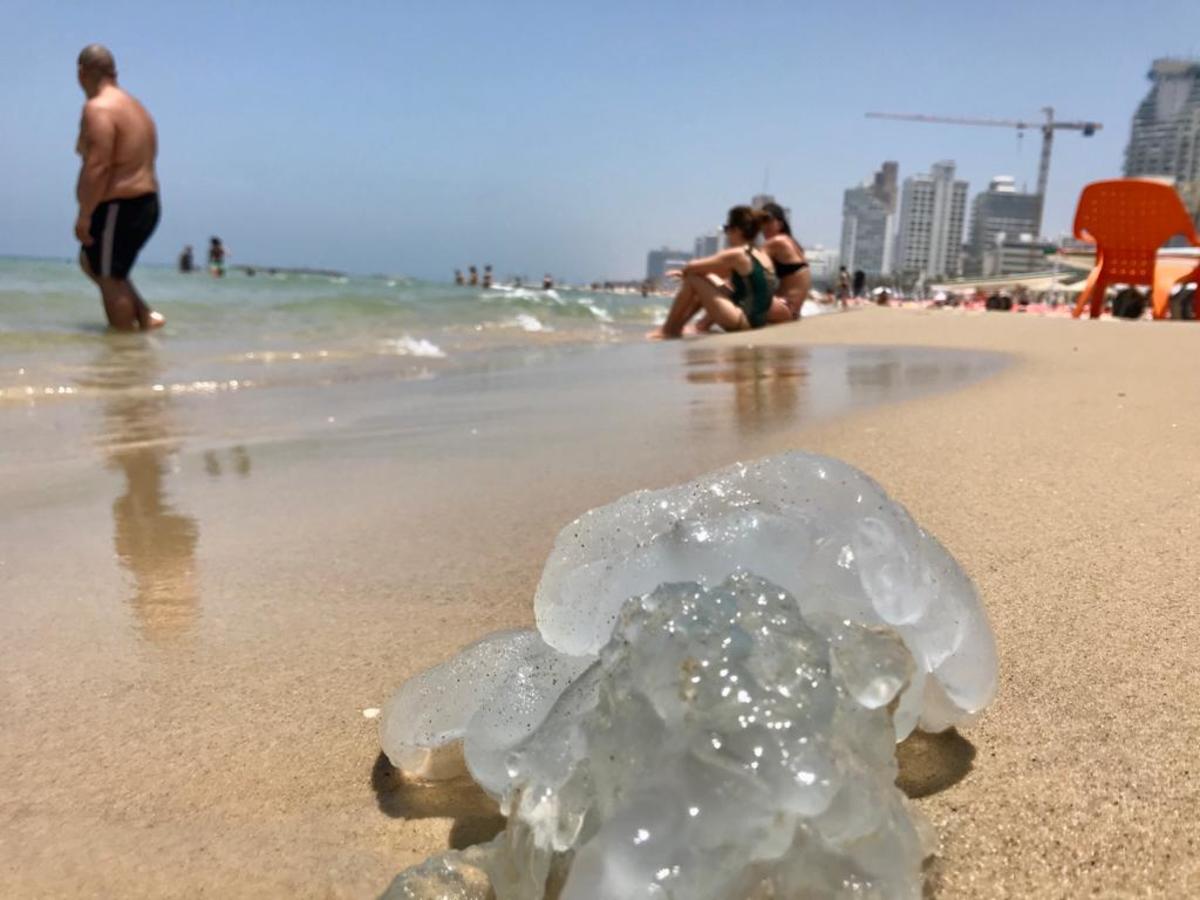The jellyfish come: As always in the summer, hundreds of thousands of jellyfish make their way to the shores of Israel and according to the forecasts, a significant number of them will already arrive in the coming days close to the bathers, most of them of the “wandering filament” type. According to reports that reached “Maariv” dozens have already been burned by the venom of the jellyfish in the last two weeks and sought medical treatment.
Jellyfish of the “wandering thread” type, which are common in Israel, arrived in our region from East Africa through the Suez Canal in the late seventies, and were discovered by Prof. Bela Galil from the Institute of Marine Research and her colleagues. Over the years, Prof. Galil has become “light and dark” in regards to this jellyfish that has spread in our area due to overfishing that hunts predatory animals such as sea turtles and sharks, and in their place the place is given to other species such as jellyfish that have no natural competitors.
The jellyfish have the ability to breed quickly and adapt exceptionally well even in times of food shortage, and they breed quickly to the dismay of the bathers. In the past, it was recommended to treat a jellyfish sting with vinegar, but about eight years ago, the Ministry of Health changed the treatment protocol, after it was proven that the vinegar treatment cannot deal with the jellyfish venom and may even worsen the burn.
The assessment that the vinegar is effective against the venom of the jellyfish then corresponded to a species of jellyfish called “the box”, which has not plagued Israel for years. With the wandering threadworm the situation is different: vinegar or urine do not neutralize its venom. And it turned out that her many needles are released from her arms even in the presence of vinegar. Meanwhile, the high level of acidity of the vinegar may worsen the burn caused by the jellyfish sting and exacerbate the allergic reaction.
This is how the updated guidelines for treating jellyfish state: first, the jellyfish arms stuck to the skin must be removed using a dry stick. Now wash the area with tap water or clear seawater that does not contain jellyfish parts. Washing with a strong current will quickly remove the jellyfish cells and prevent hatching.
In any case of a severe allergic reaction that includes shortness of breath, swelling of the lips or tongue or multiple vomiting – you must urgently go to the emergency room. Those who suffer from a severe allergic reaction will likely need treatment with an Epifen injection.
If a burn has occurred on the skin, it will be treated as with any burn: a first-degree burn manifested by redness, pain or itching requires the application of a product such as Flaminal or Silverol to calm, cool and disinfect the area, more serious burns require evacuation to a hospital. In any case of a severe allergic reaction that includes shortness of breath, swelling of the lips or tongue or multiple vomiting – you must immediately go to the emergency room.
